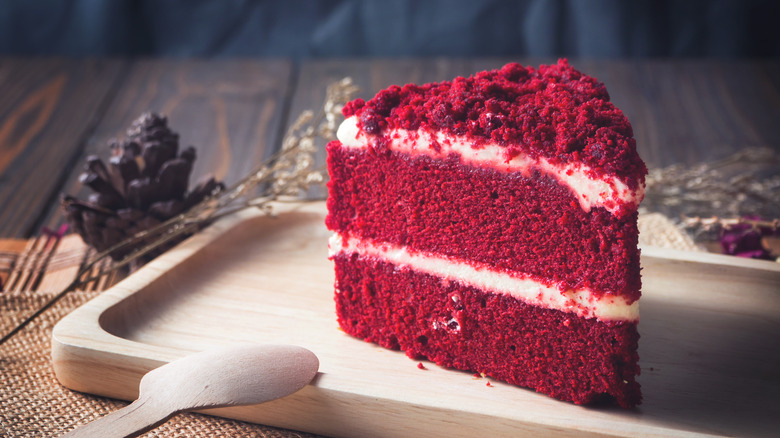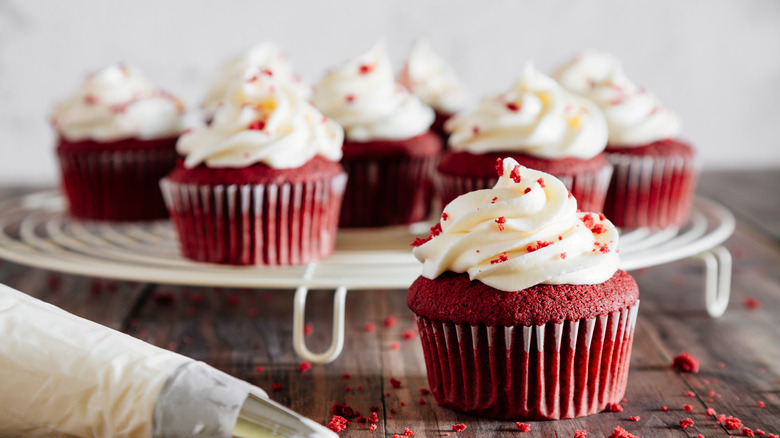The Mysterious Origins Of Red Velvet Cake
It's the favorite dessert of former First Lady Michelle Obama. And even though many of us have a go-to recipe for red velvet cake that we couldn't live without, chances are that few of us know how the cake that spawned countless iterations — from cupcakes, cookies, brownies, and muffins — actually got its bright red hue.
While it seems as if red velvet is as American as it gets, it may be surprising that "velvet" was a term that originally came out of Victorian England to describe a particular kind of cake. Chowhound says that unlike pound cakes and sponge cakes, "velvet" cakes were referred to as such because they had a much more refined texture than their cake siblings.
Velvet cakes were a thing in America too. The Culture Trip explains the "velvet" texture that distinguished this type of cake was created by using a blend of almond flour, cocoa, or cornstarch to create a chemical reaction in flour, leaving the cake with a finer crumb.
Red velvet cakes were popularized by a food dye company
The coming of World War II provides one possible insight into how the red velvet cake got its hue. Chowhound says that beets and beet juice were widely used as ingredients during that time, because the vegetable added a splash of color, and it made cakes more moist. Unprocessed cocoa was also frequently used during this period, and the combination of that and a more acidic ingredient like buttermilk, was another reason why cakes began developing a reddish hue. Though, it wasn't the intense red pop you're familiar with.
But The Culture Trip says it is really thanks to the imagination of Texas food-dye salesman John A. Adams that red velvet cakes are as bright and red as they are today. In 1938, the Food, Drug, and Cosmetic Act firmed up regulations surrounding food coloring in products (via Oola). Adams and his wife reportedly sampled the Waldorf-Astoria's signature red velvet cake, and seeing an opportunity, Adams decided to publish a cake recipe using his red food coloring. The distinctive cake became popular across Texas and at state fairs, and eventually, across the American South. It took a cameo in the 1989 film "Steel Magnolias" to help propel red velvet cake to the iconic position it holds today.

